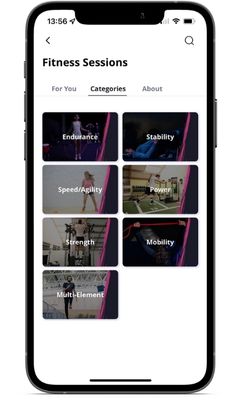Almost everyone has a more dominant side of the body (bar the ambidextrous), which will influence the hand they favour to use. This includes the hand with which squash players hold their racket – typically (but not exclusively), the same hand with which they write, carry, and interact with. This also extends to which side players favour to lunge into their shots with, but over-favouring one side can potentially cause overuse issues.
The leg we feel stronger on is most commonly the same side of the body as our dominant hand. This can sometimes be affected by circumstance (such as childhood injuries or developmental quirks), but by and large the dominant hand will match with the dominant leg.
While traditional squash coaching had players hitting with the ‘correct’ leg on each side of the court, the more modern approach is to practice to be comfortable hitting the ball off of either leg. Under pressure however, most players will have their favoured leg which they will more gravitate towards. It’s completely natural to favour one side, but maintaining a balance in both sides of the body is crucial for optimal performance.
The best way to achieve this is to ensure that you focus equally on working on your weaker side in your physical training drills. If you’re doing a ghosting session for example, set it up so that you’re working an equal number of reps working on each leg. The same with any other physical drill you do, be it ball pick-ups, shuttles, or court sprints – if you structure it so that there is an equal share of movements/turns on each leg, you’ll be spreading the load across both sides of your body.
By being deliberate in your training with balancing out both sides of your body, you’ll be helping yourself not just from a performance standpoint, but also from an injury prevention one. There will always be moments in a game when you are suddenly caused to make a quick movement, where you won’t have the time to consciously adjust and lunge into the ball on the side you would ideally prefer for that particular shot/angle. If you haven’t put time into practising a wide array of movements on both legs, then this is going to be sub-optimal in terms of being best placed to play the shot you would like. Equally important, is the fact that you’ll be stressing a movement pattern that your body has not been properly primed to carry out.
Many injuries are caused by putting the body into a compromised position that the joint doesn’t have the strength to deal with. If you only train to lunge and take balls off of your most preferred leg, when you’re caused to suddenly have to play off of the other leg within the heat of an intense rally due to an opponent’s awkward shot, the risk of injury is significantly increased.
Something else you can do to better equalise your strength on both sides of the body is to incorporate more unilateral work into your gym sessions. Single leg exercises such as rear foot elevated split squats, SLDLs, and single leg squats, are all excellent movements to help better balance both sides of your body.
 Develop your squash-specific fitness with our new on-demand fitness sessions library, available exclusively in the SquashSkills Training app. From endurance to power, mobility to speed and agility, access a variety of sessions that can be completed on-court, at home, or in the gym. They’re simple and easy to use, with sessions designed of all levels of ability.
Develop your squash-specific fitness with our new on-demand fitness sessions library, available exclusively in the SquashSkills Training app. From endurance to power, mobility to speed and agility, access a variety of sessions that can be completed on-court, at home, or in the gym. They’re simple and easy to use, with sessions designed of all levels of ability.
Simply start your subscription and check them out yourself!
Gary Nisbet
B.Sc.(Hons), CSCS, NSCA-CPT, Dip. FTST
SquashSkills Fitness & Performance Director
Sign up to the SquashSkills newsletter
Get world class coaching tips, straight to your inbox!